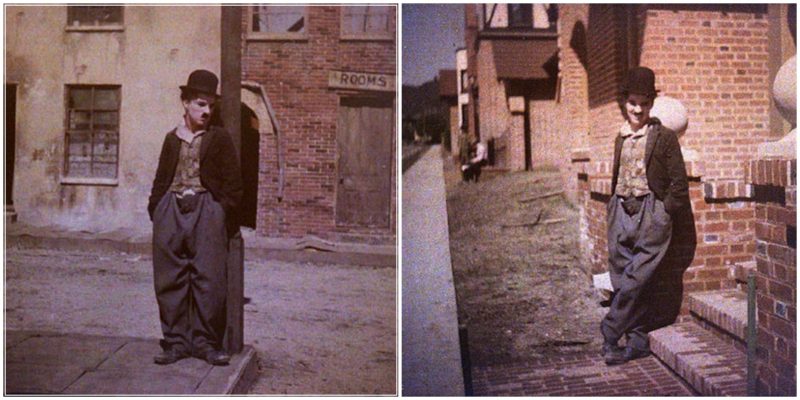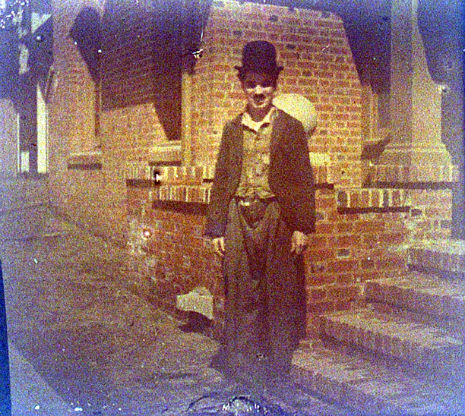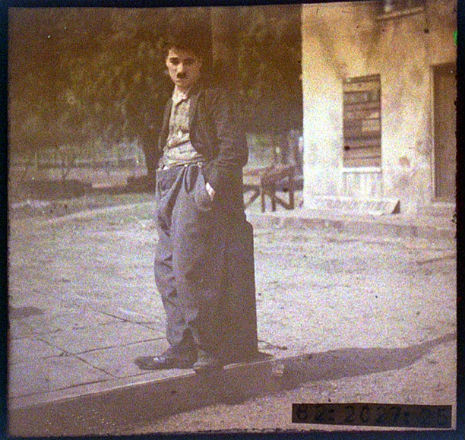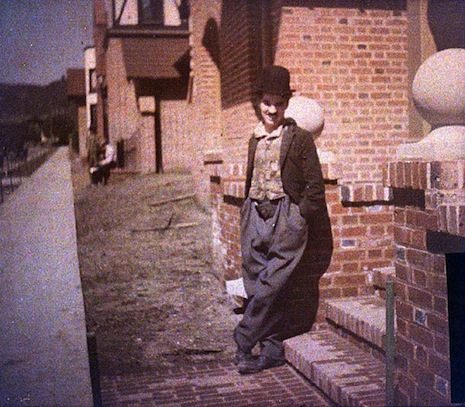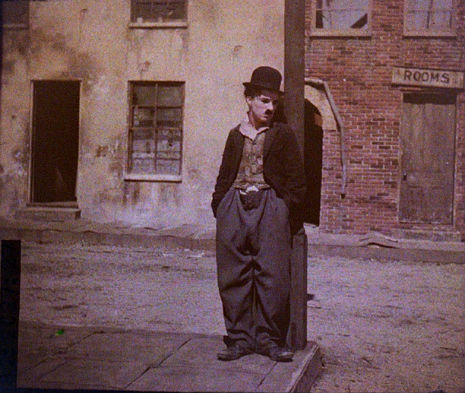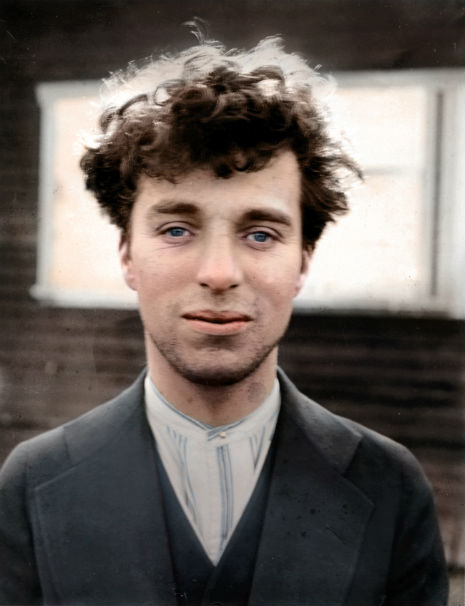The character of the Tramp was originally created by accident while Chaplin was working at Mack Sennett’s Keystone Studios, when dressing up for the short film Mabel’s Strange Predicament starring Mabel Normand and Chaplin. That was actually the first film featuring the Tramp but a different film, shot later but with the same character, happened to be released two days earlier. The Tramp debuted to the public in the Keystone comedy Kid Auto Races at Venice (released on February 7, 1914; Mabel’s Strange Predicament, shot earlier, was released on February 9, 1914). Chaplin, with his Little Tramp character, quickly became the most popular star in Keystone director Mack Sennett’s company of players. Chaplin continued to play the Tramp through dozens of short films and, later, feature-length productions (in only a handful of other productions did he play characters other than the Tramp).
In his book “My Autobiography” Chaplin explains the creation of the Little Tramp
“I went to the wardrobe and got a pair of baggy pants, a tight coat, a small derby hat and a large pair of shoes. I wanted the clothes to be a mass of contradictions, knowing pictorially the figure would be vividly outlined on the screen. To add a comic touch, I wore a small mustache which would not hide my expression.
My appearance got an enthusiastic response from everyone, including Mr. Sennett. The clothes seemed to imbue me with the spirit of the character. He actually became a man with a soul—a point of view. I defined to Mr. Sennett the type of person he was. He wears an air of romantic hunger, forever seeking romance, but his feet won’t let him.”
The Tramp was closely identified with the silent era, and was considered an international character; when the sound era began in the late 1920s, Chaplin refused to make a talkiefeaturing the character. Another reason was, the character was supposed to be American, and Chaplin himself had a strong and obvious British accent. The 1931 production City Lights featured no dialogue. Chaplin officially retired the character in the film Modern Times (released February 5, 1936), which appropriately ended with the Tramp walking down an endless highway toward the horizon. The film was only a partial talkie and is often called the last silent film. The Tramp remains silent until near the end of the film when, for the first time, his voice is finally heard, albeit only as part of a French/Italian-derived gibberish song. This allowed the Tramp to finally be given a voice but not tarnish his association with the silent era.
In The Great Dictator, Chaplin’s first film after Modern Times, Chaplin plays the dual role of a Hitler-esque dictator, and a Jewish Barber. Although Chaplin emphatically stated that the barber was not The Tramp, he retains the Tramp’s moustache, hat, and general appearance. Despite a few silent scenes, including one where the barber is wearing the tramps’ coat and bowler hat and carrying his cane, the barber speaks throughout the film (using Chaplin’s own British accent), including the passionate plea for peace that has been widely interpreted as Chaplin speaking as himself.
Two films Chaplin made in 1915, The Tramp and The Bank, created the characteristics of his screen persona. While in the end the Tramp manages to shake off his disappointment and resume his carefree ways, the pathos lies in The Tramp has a hope for a more permanent transformation through love, and his failure to achieve this.
